5 Horror Games That Deserve Not to be Forgotten

Today we’re taking a trip down memory lane, with a list of five forgotten or obscure horror titles that deserve to see the light of day once again. Remake, remaster or full on sequel, here’s my five top picks:
5. Cryostasis: Sleep of Reason
Released in 2009 by Action Forms, I’m guessing this is a game many people won’t have of heard of (que hipster snort), and those who have will probably be a bit confused as to why it’s here. Cryostasis was not, when all was said and done, a particularly good game, and time has not been kind to it. The controls were sluggish, it didn’t run very well, and to top it off it was notoriously buggy. So why is it here? Well, son, I’m glad you asked. Cryostasis had two things going for it that merits it from being relegated to the dustbin of history; its premise, and its monsters.
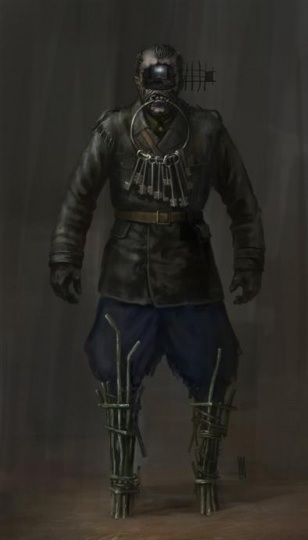
Set in 1981, the game revolves around a nuclear-powered icebreaker in the middle of the North Pole, with players assuming the role of a Russian meteorologist named Alexander Nesterov. The ship is Nesterov’s only means back home, but on arrival he finds its derelict, having been stuck in the ice for over a decade (news travels slowly up north, it seems). Stranger still, the ship has been overrun with mutated crewmembers, and Nesterov finds he can travel back in time by accessing the memories of the dead. Nesterov must survive the ship’s danger and uncover the mystery of how it ended up this way.
The setup is certainly a strange one, and I’m not sure if the idea was to do some kind extended metaphor about being literally ‘frozen in time’. Regardless, the setting has all the trappings you need for a horror experience. For one thing, it’s a classic hostile environment. Not only does an icebreaker offer some claustrophobic spaces to explore, but players also have to contend with the killer cold, and must try to find any source of warmth to stop their body temperature from dropping too low. It was a mechanic used to great effect in 2002’s The Thing video game, and adds an interesting ticking clock element to proceedings. Similarly, recreating a place’s tragic story through the eyes of the dead is something that offers a lot of immersive storytelling potential, as we’ve seen in something like Return of the Obra Dinn.
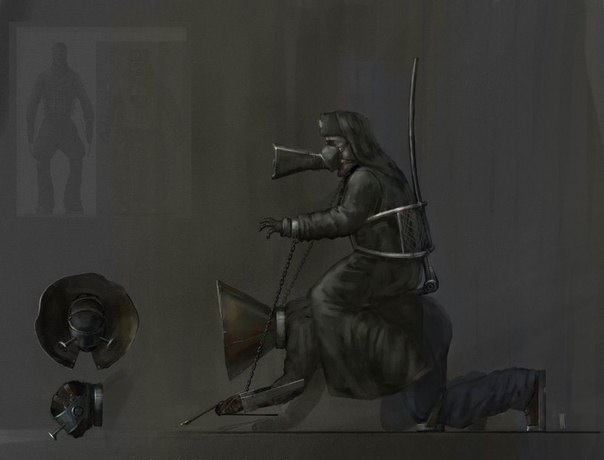
But the main I’m putting this game on the list is its monster design. You start off in fairly milquetoast territory, with most of the enemies basically being half-frozen zombies, but as the game progresses the creatures only get weirder and weirder. Bugs and imprisonment become recurring themes, like someone mixed Kafka, One Day in the Life of Ivan Denisovich and Silent Hill together and chucked the result in an ice locker for 48 hours. Standouts are the Overseer, a massive creature with its hands stuck to helmet-mounted flashlights and machine guns strapped to its arms, and a gasmask-wearing engineer with icy spider limbs growing out of its back. Creative monster designs are something that’ll always sell me on a game, and will be something I’ll be returning to in another entry.
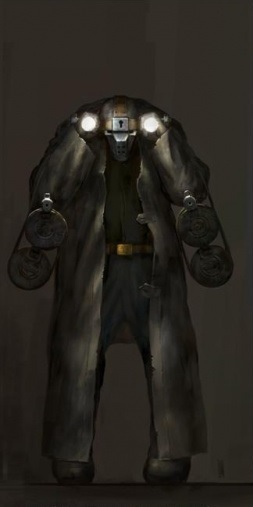
4. Ghosthunter
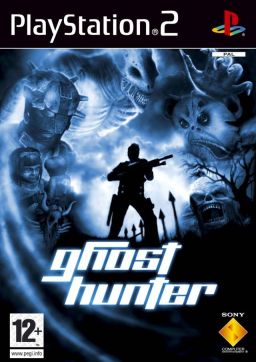
Coming to us courtesy of the makers of the cult classic MediEvil series, Ghosthunter was a third person shooter released in 2003 exclusively for the PS2. The basic gist of the game had you following Lazarus Jones, a frat bro rookie cop sent to investigate weird goings on at an abandoned school with his cop partner Anna Steele. After finding a mysterious machine in a hidden basement, Jones presses a literal Big Red Button of Doom and ends up unleashing a horde of ghouls, ghosts and things that go bump in the night on the world. With the help of the machine’s AI and a friendly spirit called Astral, players were tasked with undoing Jones’ screw up and rescuing his kidnapped partner.
Though the core gameplay was competent, there was nothing really there to write home about, with it offering some pretty standard third person shooting and light puzzle solving. What carried it was its visual flare and the ideas on offer. Jones’ journey would pretty much run the gamut of creepy locales, from the aforementioned school, to a ghost ship, to Deliverance-inspired Redneck swamps, as well as a castle, a prison, a gothic mansion and a military base. Every level felt distinct, and was accompanied by some creative enemies themed around each area. Amongst the lineup of ghouls could be anything from chainsaw-wielding, crocodile-headed hillbillies to giant, poltergeist-powered robots made from scrapyard junk. There were even giant killer teddy bears! Seriously, those things were freaky.
Ghosthunter was one of those games that took a kitchen sink approach to its subject matter, and feels like something were the developers just crammed every wacky idea they had into the project. A modern game that did something similar would be awesome, taking the concept of ghosts, running with it, and then cranking the tropes up to 11.
3. Nocturne
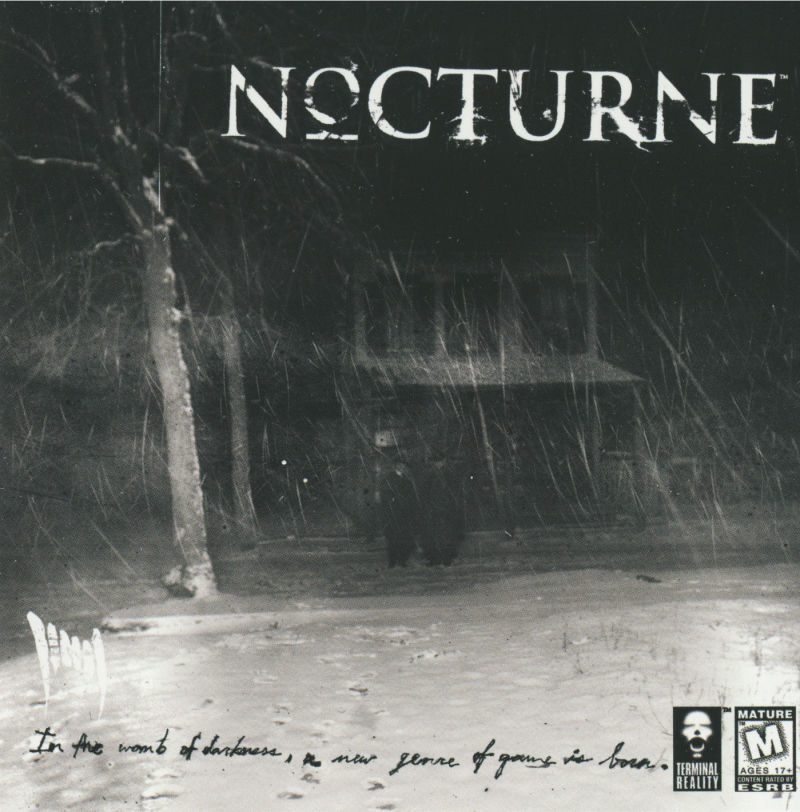
The Nocturne franchise’s history is a crazy story if ever there were one (also, freaky boxart, right?) Released in 1999 by Terminal Reality, the first Nocturne followed the adventures of members of ‘Spookhouse’, a secret US government organization set up by Teddy Roosevelt to combat supernatural threats. You played as The Stranger, a dual-pistol wielding noir archetype (trench coat and fedora included, naturally) sent to investigate four strange cases, coming face to face with a number of classic horror monsters including vampires, werewolves and zombies.
The game was a fairly decent romp, plagued by a few annoying bugs and some really infuriating platforming, but it had enough of an identity to make it stand out. The voice acting was campy fun, the premise of a Hellboy-esque secret society combating paranormal dangers an interesting game premise, and for its time the visuals were impressive.
The wacky part in all this was the game’s sequels. Nocturne never got a direct sequel in the strict sense of the word, but it managed to live on under other guises. In 2000, Terminal Reality released a survival horror game set in the Blair Witch universe of all things, called Blair Witch Volume I: Rustin Parr. Whatever you may associate with The Blair Witch Project film, I’m guessing that a secret society of monster-hunting badasses is not exactly the first thing to springs to mind. It may surprise you, then, to know that this was what the game was all about. Rustin Parr was effectively a sequel in all but name to the original Nocturne, simply using The Blair Witch’s iconography and the basic gist of being in a creepy forest to tell its own story.
Players followed another member of Spookhouse – Elspeth “Doc” Holliday – as she investigated weird goings on in the nearby town of Burkittsville. Toning down the action-heavy nature of the first game (with the first game’s protagonist abstaining from the case literally because evil spirits aren’t things you can shoot), the game was a mixture of combat, exploration, puzzle solving and interacting with the town’s inhabitants.
While Volume 2 was made by a different developer, Nocturne still managed to live on through another IP, the BloodRayne series. These action-slasher games followed the titular Rayne, a wrist-blade wielding human-vampire hybrid who was a very thinly veiled stand-in character for another Spookhouse member matching that description. So closely did Bloodrayne and Nocturne overlap, in fact, that the first Bloodrayne game even involved a special magical MacGuffin that served as the driving plot device for one of Nocturne’s chapter.
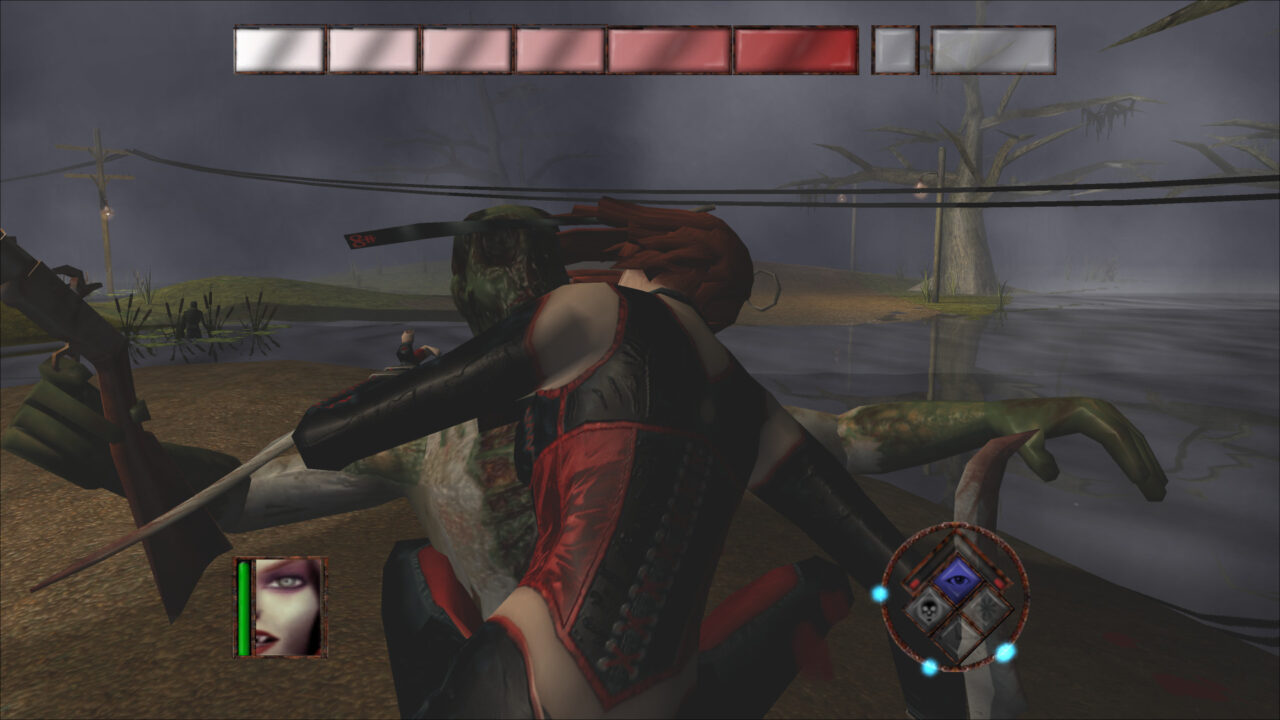
If Nocturne deserves to remembered, it’s chiefly due to the developer’s tenacity to keep the game’s lore alive no matter in what IP it surfaced. At this point I’d love to see its bizzarro history continued, and for another Nocturne universe game to pop somewhere totally unexpected.
2. Condemned
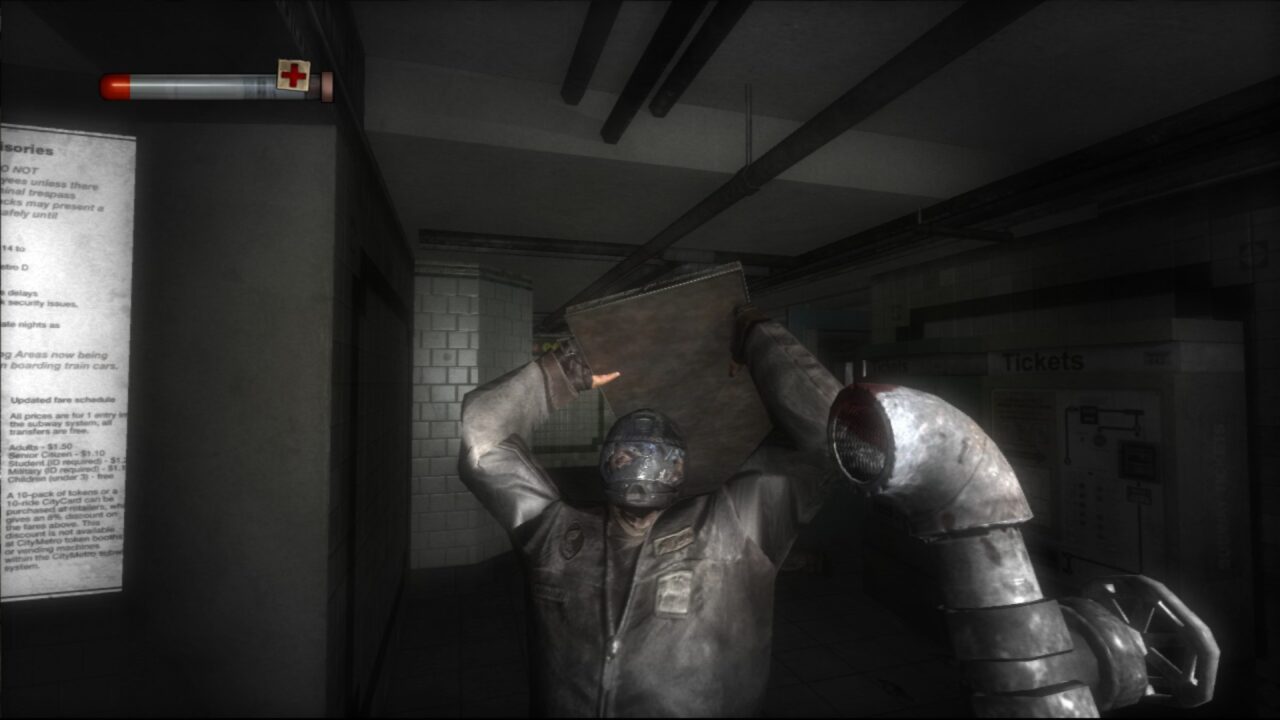
The Condemned series was a pair of survival horror games developed by Monolith Productions, the developers behind the influential F.E.A.R. games. The first game, Condemned: Criminal Origins, was released in 2005 as a launch title for the Xbox 360, and was followed in 2008 with a sequel, Condemned 2: Bloodshot. They followed Ethan Thomas, a homicide detective in a city plagued by a mysterious epidemic of violence and anti-social behavior. The games were known for their unnerving atmosphere and gritty combat, which eschewed firearms in favor of a melee system based around using items from the environment to bludgeon your foes with.
Even today there’s still nothing quite like Condemned. In most horror games you’re usually put in a remote, isolated location with few if any other people, or in an environment where some great disaster has already occurred and everyone’s dead. But in Condemned you were playing in the middle of a metropolis; a place with functioning infrastructure where people lived and held down jobs. The evil plaguing it wasn’t a dramatic collapse like a zombie outbreak, but something more insidious; an unspoken, indefinable social malaise only half-acknowledged, slowly spreading its poison from the bottom rungs of society upwards. The games took you through the underbelly of the city, exploring rundown tenement housing, metro tunnels and abandoned buildings turned into crack dens and worse. Your main enemies were thugs, muggers and hoodlums, all inexplicably given over to violence to such a point that they were just as monstrous as any supernatural foe.
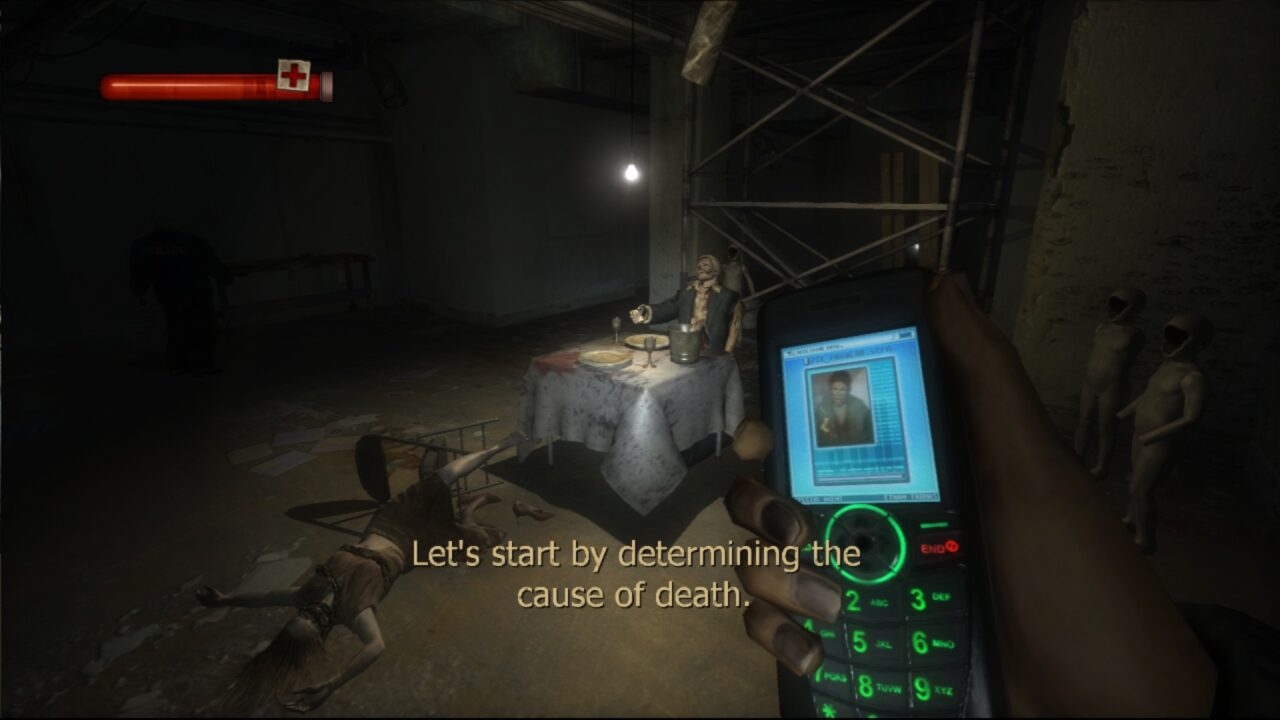
The greatest frustration about the Condemned series was how it ended. The second game made many improvements over the first, expanding the melee system and adding an element of deductive reasoning to Ethan’s investigative sequences. I’ll also go on record as saying that the first half or so of Condemned 2’s campaign ranks as one of the greatest survival horror experiences of all time. But the whole thing was let down by a story that lost all subtlety towards the end, leaving many players disappointed by an ultimately unsatisfying conclusion.
The worst part of this tale was it so patently obvious why the game ended up this way. In what I would be more than confident in guessing was a move forced on the developer by the business suits, the game featured a bafflingly out of place multiplayer component which was about as popular as you think it would be in a game like this. There are levels in the latter half of Condemned 2’s campaign where you can keenly feel the cuts biting, made all the more poignant when you realize what they were probably making room for. If they could have polished it a bit more, rather than working on a needless multiplayer system, the whole thing could very well have been one of the best horror games of the decade.
It’s a shame things bottomed out on such a low note, because Condemned isn’t a series that deserves to end up like its namesake. With Condemned 2’s story pretty much making it impossible to go back to a more grounded setting in a sequel, the IP really requires some sort of remake to bring it to a new generation of horror gamers. If this ever does happen, you can bet your ass that I’ll be one of the first in line waiting to sign up, bloodstained baseball bat in hand and all.
1. The Suffering
Finally we come to the top entry on this list, the criminally underrated (pun definitely intended) Suffering games. Donning the orange jumpsuit of convicted death row inmate Torque, The Suffering was an action horror game released in 2004 for the PS2, Xbox and Windows.
The game was set on Carnate Island, a fictional islet off the coast of Maryland on whose blood-soaked soil a history of atrocities had been committed. The island was home to the notorious Abbot State Penitentiary, one of America’s worst prisons and the place where the State of Maryland conducts most of its executions. Taken to Abbot to await his fate, Torque’s arrival coincides with a supernatural cataclysm that unleashes a horde of bloodthirsty and bizarre monsters on the island.
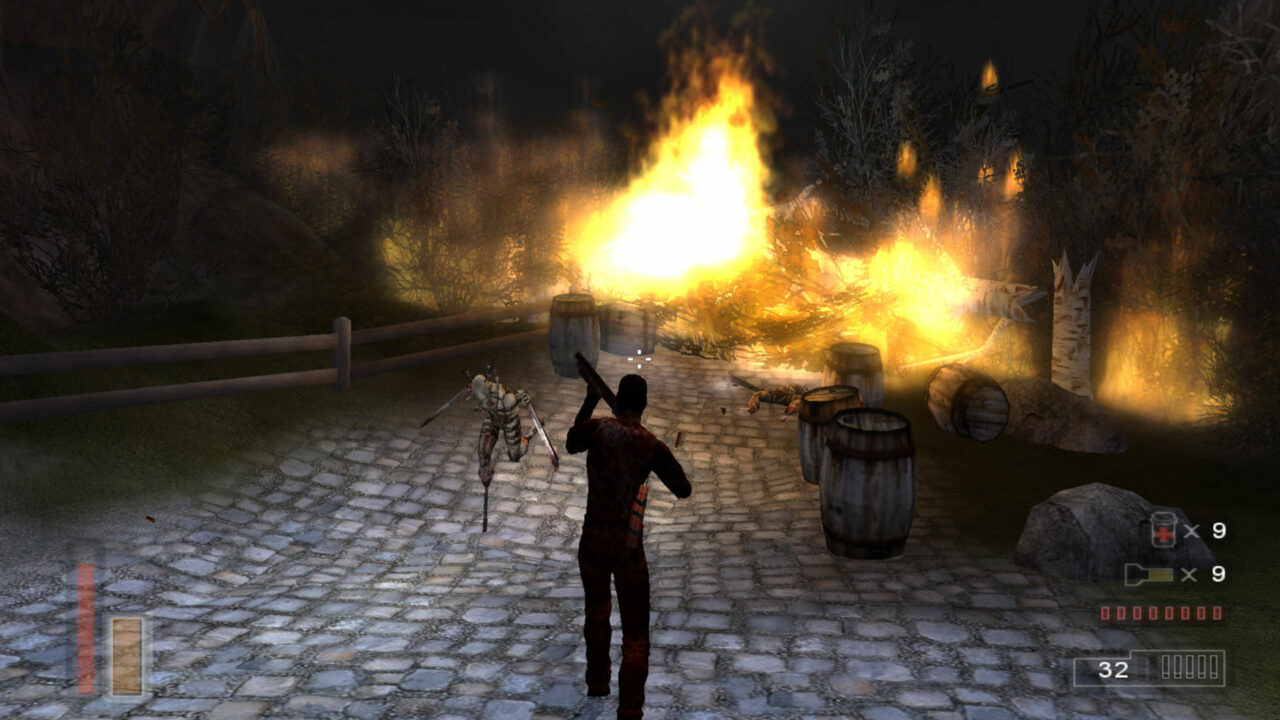
The game could be played in either first- or third-person mode, with the player being able to switch seamlessly from one perspective to the other at the press of the button. In addition to weapons like shotguns, Tommy guns and Molotov cocktails, Torque could also transform into a hideous beast equally the match of the monsters he came up against. Whether this was actually real or not was left up to the player to decide, as Torque’s own mental state was somewhat questionable. As well as determining his fate and the game’s ending, players would also be able to decide whether Torque was actually guilty of the crime he was accused of through their actions, Torque himself having suffered a blackout when the crime commenced.
So why does The Suffering get the number 1 spot on this list? Well, you remember in entry 1 I stated I’m a sucker for good enemy design? The Suffering has some of the most original and unique monsters I’ve ever seen in a horror game, easily up there with the creatures from Silent Hill. Every monster was themed on a particular method of capital punishment, or else a crime from Carnate’s dark past, and were as interesting to fight as they were to look at. Some creatures would scuttle on walls like spiders, whilst others could burrow underground or attack you by summoning a horde of exploding rats. Before or since, it’s hard to think of a roster of horror monsters that combined such a degree of visual flare with interesting combat possibilities.
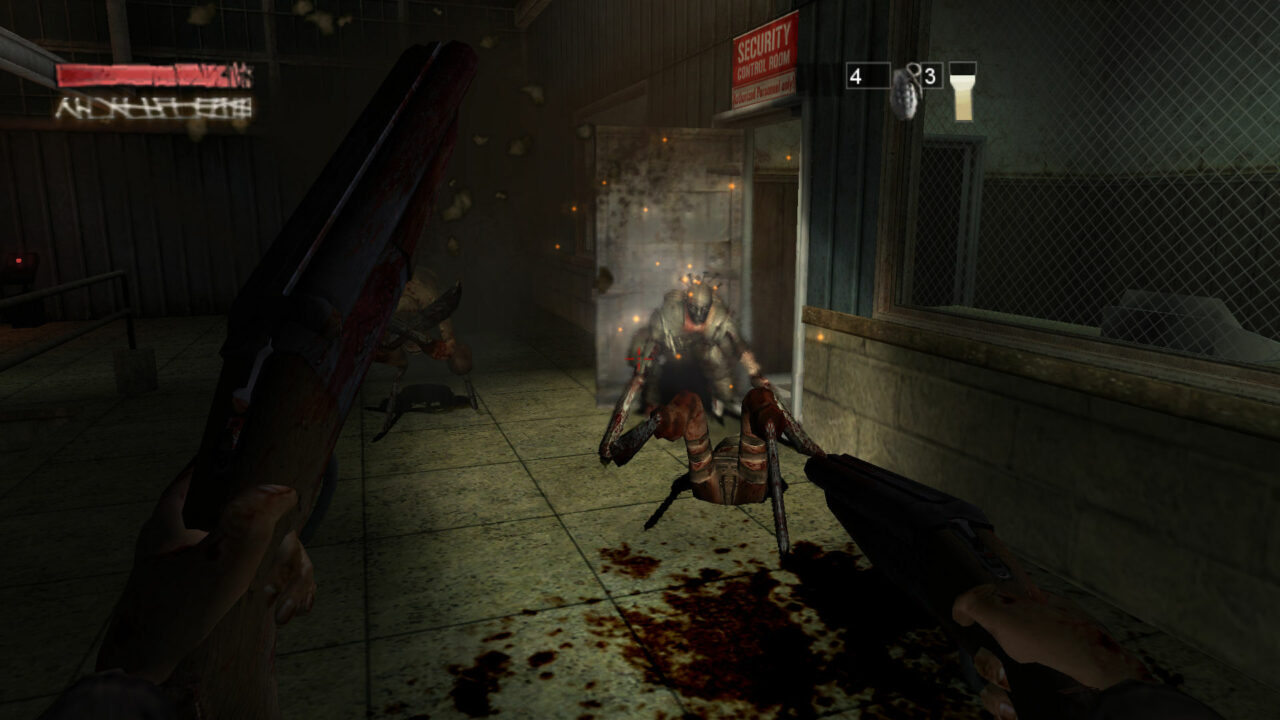
The Suffering was followed by a sequel, Ties That Bind, which released in 2005. Despite a number of graphical enhancements (even by today’s standards, the game looks pretty darn good) and some more cool monsters, Ties That Bind didn’t sell as well as its predecessor and the series ended there. Today it’s pretty much faded entirely from the minds of the gaming public, and it’s shocking how little of a mention the games seem to get anywhere. Fortunately, the series hasn’t been completely abandoned, as in 2017 both games were rereleased on GOG.com (although getting the first one to run can be a bit of a pain).
Still, if there’s one game on this list that’s just crying out for a remake, it’s got to be The Suffering. The premise of a condemned inmate trying to escape a haunted prison is too good a setup not to use, and it’d be great to see an updated version of the game that implemented all the strides in graphics and design the industry has made since its original release. In a time where most horror games invariably revolve around zombies (something I’ve complained about before), a game with a decent set of combat chops on it and a rogue’s gallery of unusual foes would be a breath of fresh air.
Categorized:Editorials
